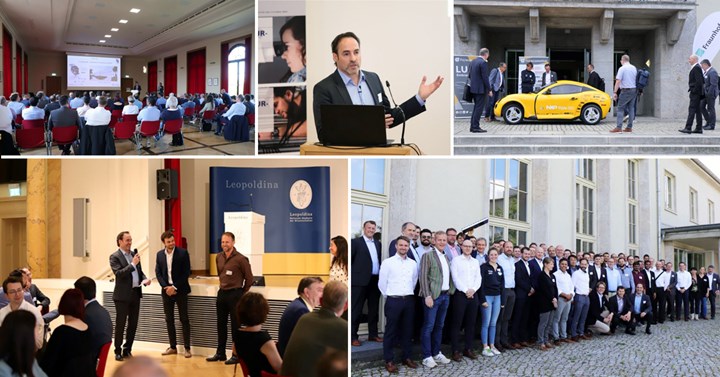Global experts present latest developments at Composite Sandwich Conference in May
The CSC 2022 conference, jointly organized by Thermhex and Fraunhofer IMWS, enabled a productive exchange of information about cost-efficient composite sandwich structures and automated processing methods.
Share
Read Next
More than 100 composites and sandwich construction experts from around the world spent two days exploring the technical challenges of how to strip weight from transport using honeycomb cores. The experts attended the joint Thermhex Waben (Halle (Saale), Germany) and Fraunhofer Institute for Microstructure of Materials and Systems (Fraunhofer IMWS) Composite-Sandwich Conference held in Halle (Saale) from May 24-25, 2022.
According to event organizers, delegates were shown the latest research, covering a wide range of areas, including, among others:
- Principals of sandwich technology for airframe and interiors;
- Thermoplastic sandwich composites — novel processing in automotive;
- The design of composite sandwiches for train car body shells;
- Automated fiber placement (AFP) for sandwich parts in helicopters;
- Multiscale modeling and the future of the composite sandwich technology.
Moreover, the conference is said to have provided the opportunity for engineers and scientists from across the composites sector to explore new fields of application for composite sandwich materials and network with some of the leading minds in the sector.
“Honeycomb sandwiches are gaining increasing usage in a wide range of industries,” Dr. Jochen Pflug, CEO of ThermHex, notes. “I am constantly amazed with the creativity of the industry in applying this technology, efficiently and effectively and excited about the future applications and potential of composite sandwich materials.” Thermhex Waben’s polypropylene lightweight sandwich panels have been used in the manufacture of trucks, ship interiors, prefabricated bathrooms and modern swimming pools.
“The conference enabled a very productive exchange and brought many new insights, for example on the need for cost-efficient composite sandwich structures and their processing by automated production methods, the reliability of the components produced with them or even new possible applications for sandwich technology,” Dr. Ralf Schlimper from the Fraunhofer IMWS summarizes. “The positive response shows how huge the potential of the technology and the interest among companies is, especially in the field of mobility systems, to tap into it.”
The keynote speech of Professor Axel Herman of CTC Stade (Germany), an Airbus company, and the University of Bremen (Germany), which opened the conference at its location at the German National Academy of Sciences Leopoldina, was given be Tassilo Witte. Other speakers came from companies across the industries, including Beyond Gravity (formerly RUAG Space), Airborne, Elring Klinger, Engel, Fraunhofer IGCV, Fraunhofer IMWS and EconCore.
Delegates were also able to visit ThermHex Waben’s production facilities and the Fraunhofer pilot plant Centre for Polymer Synthesis and Processing PAZ to receive new insight on the potential of efficient production technologies for thermoplastic sandwich structures, from ThermHex’s semi-finished organosandwich products to 3D formed and functionalized parts via Fraunhofer IMWS’s TS-Moulding Technology.
Related Content
-
Infinite Composites: Type V tanks for space, hydrogen, automotive and more
After a decade of proving its linerless, weight-saving composite tanks with NASA and more than 30 aerospace companies, this CryoSphere pioneer is scaling for growth in commercial space and sustainable transportation on Earth.
-
The lessons behind OceanGate
Carbon fiber composites faced much criticism in the wake of the OceanGate submersible accident. CW’s publisher Jeff Sloan explains that it’s not that simple.
-
Cryo-compressed hydrogen, the best solution for storage and refueling stations?
Cryomotive’s CRYOGAS solution claims the highest storage density, lowest refueling cost and widest operating range without H2 losses while using one-fifth the carbon fiber required in compressed gas tanks.

















